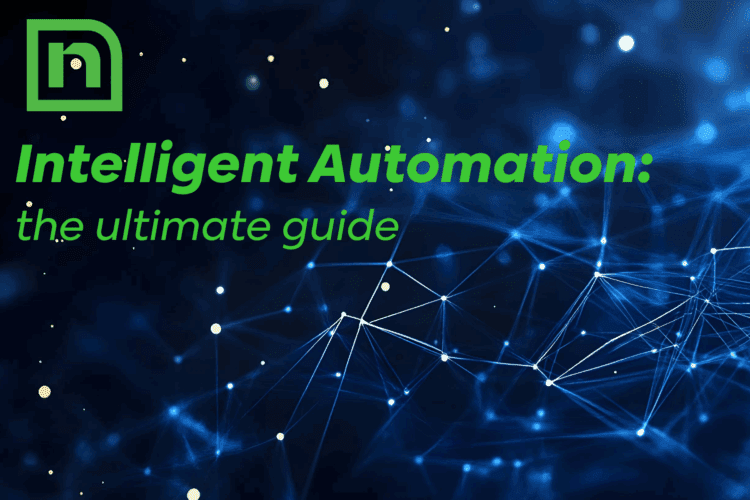By now, most organizations are far along on their intelligent automation journeys, which means they probably have many automated processes across the enterprise to monitor and improve over time, and many more manual processes to consider automating.
But the more you expand your automation efforts using traditional automation tools, the more involved this maintenance process becomes, not to mention the strain it puts on your ability to get a bird’s-eye view of your process landscape.
This is where process orchestration, sometimes referred to as business orchestration, can help.
It’s becoming a popular tool for organizations looking to regain control, full visibility, and deeper insights into their intelligent automation investments.
Let’s take a look at what exactly process orchestration is and how it can help you.
What is Process Orchestration: How it Can Help YouWhat is Process Orchestration?
Process orchestration is a management approach that lets you see the big picture of your processes and manage both your manual and automated processes more effectively, no matter where they’re located in your organization or what tools were used to build them – technology silos, no more. This is because process orchestration uses applications’ APIs instead of their user interfaces.
In practice, you can apply process orchestration software to enjoy capabilities like:
- Gain full visibility into all your processes across disparate systems
- Map and streamline processes
- Identify bottlenecks
- Integrate data and automation
- Build workflows
- Discover optimization opportunities for complex workflows
- Monitor process performance
With these capabilities, you can ensure that all of your organization’s automated tasks are working together as they’re supposed to. Plus, it lets you turn your task automation into a smooth and efficient strategy that drives success organization-wide.
Now that we’ve established what process orchestration software is, let’s look at the value it can provide your organization’s digital transformation.
Why Process Orchestration Matters: How it Can Help You
1. It Eliminates IT Sprawl
As we already touched on, the modern organization has a headache-inducing range of disparate systems, from SaaS products to legacy systems, sprawled across its various departments. Process orchestration technology offers a solution to this problem, which is a game-changer for comprehensive process improvement, as complex processes tend to rely on multiple technologies and data sources that otherwise can’t connect.
2. The More You Scale, the More it Helps
Since process orchestration lets you view and manage all your processes regardless of system, it’ll naturally scale and grow alongside your organization. If you decide to implement a new system, you can count on your process orchestration solution to support that investment.
3. It Boosts Process Efficiency
Additionally, process orchestration coordinates the identification and deployment of process optimization opportunities, which makes it easy for you to rake in the operational efficiency gains. Whether it’s adding continuous improvements to your automated processes over time or automating a formerly manual process, process orchestration is well equipped.
4. Connected Systems Provide Better Experiences
When all your systems are connected and your multiple processes are optimized and synchronized, it’s bound to trickle down to your employee and customer experiences. Everyone benefits from work that’s done quickly and accurately, whether it’s increased employee satisfaction from business users streamlining their work by automating repetitive tasks, or enhanced customer experiences from your customers enjoying faster turnaround time and more personalized service.
5. Benefit from New Technologies Seamlessly
Implementing new technologies is key for organizations to remain agile and position themselves as industry leaders. But unrolling new solutions and weaving them into your existing technology landscape is notoriously time-consuming, making this a huge hurdle for organizations looking to capitalize on emerging technologies. Process orchestration technology removes this challenge, as it can execute the seamless integration of new technologies, working them into your existing workflows with ease.
6. It Simplifies the Auditing Process
Process orchestration also increases the effectiveness of both risk management and compliance. It can accomplish this by standardizing and centralizing your complex processes, making the auditing process far faster and easier.
No More Process Management Stress
As technology advances and your organization’s digital transformation journey grows in scope and complexity, having a platform to help you view, monitor, and optimize it all, regardless of disparate systems will only become more invaluable. And the sooner you make the investment, the sooner you’ll be able to make the most of your existing solutions and the data and processes they hold.
Do you have any questions about how process orchestration might fit into your organization’s current state? We’d be happy to chat with you – just drop your question in the chat below.
Want More Content Like This?
Subscribe to the Naviant Blog. Each Thursday, we’ll send you a recap of our latest info-packed blog so you can be among the first to access the latest trends and expert tips on workflow, intelligent automation, the cloud, and more.






